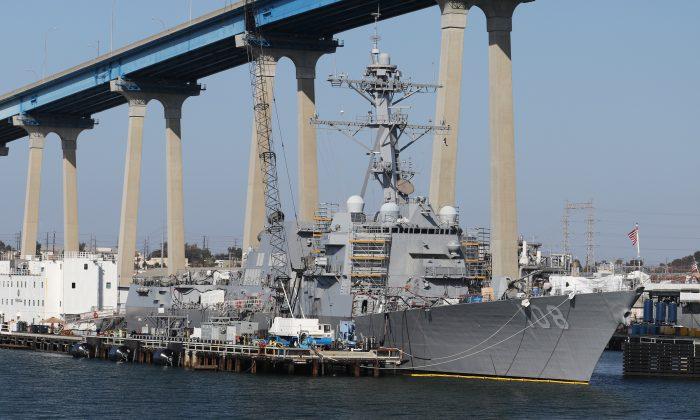WASHINGTON—A U.S. Navy destroyer sailed near islands claimed by China in the South China Sea on Sept. 13, the U.S. military said, a move likely to anger Beijing.
The busy waterway is one of a growing number of flashpoints in the U.S.-Chinese relationship, which include an escalating trade war, American sanctions on China’s military and U.S. relations with Taiwan.
Commander Reann Mommsen, a spokeswoman for the U.S. Navy’s Seventh Fleet, told Reuters that the destroyer Wayne E. Meyer challenged territorial claims in the operation, including what she described as excessive Chinese claims around the Paracel Islands, which are also claimed by Taiwan and Vietnam.
“...China has attempted to claim more internal waters, territorial sea, exclusive economic zone, and continental shelf than it is entitled under international law,” Mommsen said.
China’s defense and foreign ministries did not immediately respond to a request for comment.
The United States on Thursday welcomed China’s renewed purchases of U.S. farm goods while maintaining the threat of U.S. tariff hikes as the world’s two largest economies prepared the ground for talks aimed at breaking the logjam in their trade war.
China and the United States have traded barbs in the past over what Washington has said is Beijing’s militarization of the South China Sea by building military installations on artificial islands and reefs in disputed waters.
China’s claims in the South China Sea, through which about $5 trillion in ship-borne trade passes each year, are contested by Brunei, Malaysia, the Philippines, Taiwan and Vietnam.
The Chinese regime claims that it has historical ownership over nearly the entire region, which gives it the right to manufacture islands, declare defensive perimeters around its artificial islands, and to chase ships from other nations out of the South China Sea.
However, on July 12, 2016, an arbitration court in The Hague found the Chinese regime’s claims to be false. In the U.N. tribunal’s ruling, China’s claims to virtually the entirety of the South China Sea were dismissed by the 5-member tribunal as having no historical basis. It was also determined that the multiple artificial islands that have been built by and used as bases by the Chinese military do not constitute territory entitled to zones of economic exclusivity. Rather, they were found to be in violation of the sovereignty of the Philippines. The Chinese Communist Party (CCP) immediately rejected the tribunal’s decision.
By Idrees Ali. The Epoch Times contributed to this report.






Friends Read Free